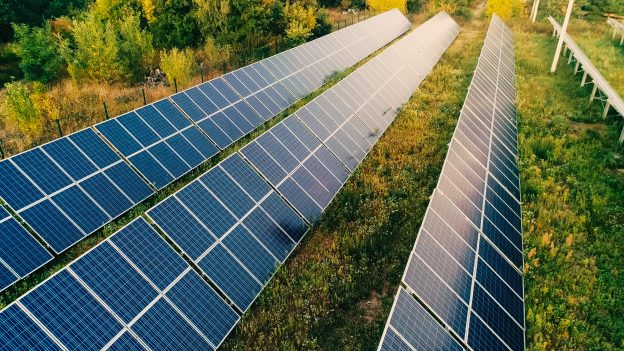In 2023, China's new photovoltaic (PV) installations reached 216.88GW, a year-over-year increase of 148.1%. The rapid deployment of high-efficiency N-type modules played a crucial role, not only elevating the efficiency of solar power generation but also enhancing its competitiveness.
In 2024, leading PV companies continue to boost their N-type capacity to meet the market demand for advanced production capabilities. According to annual reports and research by Wiki Solar PV, the capacity planning of leading PV enterprises has been compiled and analyzed.
These companies are still focused on enhancing the capacity of advanced wafers, cells, and modules. Among these, cell capacity is a priority, with leading enterprises reaching a cumulative capacity of over 130GW, module capacity exceeding 100GW, and wafer capacity rising above 85GW.
Jinko
At the end of 2023, Jinko's capacity for silicon wafers, cells, and modules was 85GW, 90GW, and 110GW, respectively, with an integration rate of over 85%. High-efficiency N-type cell capacity exceeded 70GW. This leading N-type capacity allowed Jinko Energy to claim the global crown for module shipments in 2023, with total shipments of 78.52GW, including 48.41GW of N-type modules, accounting for about 62%. By the end of 2024, the capacity for wafers, high-efficiency cells, and modules is expected to reach 120GW, 110GW, and 130GW, respectively, with N-type capacity comprising over 90%.
LONGi
By the end of 2023, LONGi's own wafer capacity reached 170GW, cell capacity was 80GW, and module capacity was 120GW. Over the next three years, LONGi anticipates its annual capacity for wafers to hit 200GW, with the "Tairui" wafers accounting for over 80% of this; BC cell capacity reaching 100GW; and module capacity hitting 150GW. LONGi has not released specific capacity plans for 2024, but its three-year forecast indicates an overall capacity shift towards "Tairui" wafers and upgraded BC cells.
Trina Solar
At the end of 2023, Trina Solar had capacities of 55GW for wafers, 75GW for cells, and 95GW for modules. By the end of 2024, these capacities are expected to increase to 60GW, 105GW, and 120GW, respectively, further boosting the share of advanced capacities.
JA Solar
By the end of 2023, JA Solar's module capacity exceeded 95GW, with wafer and cell capacities at about 90% of the module capacity, including more than 57GW of N-type cells. According to JA Solar's future capacity plans, by the end of 2024, its capacities for wafers, cells, and modules are all expected to surpass 100GW.
Tongwei
At the end of 2023, Tongwei Shares had established a capacity of 450,000 tons of high-purity silicon, 95GW of solar cells, and 75GW of modules. Between 2024 and 2026, Tongwei's high-purity silicon capacity is projected to reach 800,000 to 1,000,000 tons, cell capacity 130-150GW, and module capacity 80-100GW. While specific plans for 2024 have not been announced, Tongwei is known for its rapid advancement in capacity, with expectations of yearly growth. Additionally, Tongwei's wafer project commenced in 2023, and further integration of capacities is anticipated.
Canadian Solar
According to Canadian Solar's annual report, at the end of 2023, its capacities for ingot pulling, wafers, cells, and modules were 20.4GW, 21GW, 50GW, and 57GW, respectively. By the end of 2024, these are expected to reach 50.4GW, 50GW, 55.7GW, and 61GW, respectively.
Astronergy
Astronergy, vigorously advancing its N-type capacity, had capacities of 53GW for cells and 55GW for modules at the end of 2023. Among these, N-type TOPCon capacity was 43GW, representing 81% of its total capacity. By the end of 2024, Astronergy's cell and module capacities are expected to reach 65GW and 76GW, respectively, with N-type TOPCon capacity increasing to 59GW, accounting for 91%.
Risen Energy
According to Risen Energy's annual report, it had a module capacity of 35GW at the end of 2023. In 2024, Risen plans to orderly progress its high-efficiency, low-carbon advanced capacity projects, including a 15GW N-type solar cell project in Ninghai, Zhejiang, and a 15GW high-efficiency solar module project, as well as a 4GW high-efficiency solar cell project in Jintan, Jiangsu, and a 6GW high-efficiency solar module project, along with a 10GW high-efficiency solar cell project in Chuzhou, Anhui. These initiatives aim to optimize and upgrade the company’s existing capacities.
DASOLAR
Representing a new generation of PV companies, DASOLAR had built a capacity of 30GW each for cells and modules by the end of 2023, possessing an industry-leading cell to module pairing rate. In 2024, its capacity is expected to significantly increase from the 2023 base, with projected cell and module capacities reaching 50GW each.
GCL
At the end of 2023, GCL constructed a 10GW TOPCon high-efficiency solar cell capacity in Wuhu and, based on the existing 17.5GW high-efficiency module capacity in Hefei, launched a new 12GW efficient module production in Funing, reaching nearly 30GW of high-efficiency module capacity. In 2024, GCL plans to improve the manufacturing processes at its Wuhu cell base, aiming to increase its cell capacity to 12GW and further enhance the utilization rate of its 30GW module capacity.
Source:Ofweek







